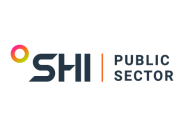

This increasing dependence on data — and its growing complexity and volume — means you can’t overstate the importance of data backup. The repercussions of data loss or breaches in public sector organizations can be far-reaching and impact citizens, governments, and economies, as we saw in 2022.
Last year, ransomware impacted 106 local governments. Data was stolen in at least 27 events, per Emsisoft. Eighty-nine educational institutions fell prey to ransomware, including 44 colleges and universities and 45 school districts that operate 1,981 schools. Healthcare providers weren’t spared either. There were a reported 25 incidents involving hospitals and multi-hospital health systems, which had the potential to impact patient care across a network of up to 290 hospitals.
Unfortunately, public sector organizations face several sizable challenges when it comes to protecting their data. From budget constraints to complex IT infrastructures and regulatory compliance requirements, public sector decision-makers must navigate a maze of obstacles to adhere to best practices and ensure efficient data backup processes while maintaining security.
Fortunately, by thoroughly dissecting these areas, you’ll discover actionable solutions and strategies for maximizing data protection efforts — and partners who can help.
Addressing limited resources and budgetary concerns
Public sector organizations often have limited budgets and competing priorities, which require careful balancing. Strategic planning is vital to ensure you allocate sufficient resources for data backup.
Evaluating the criticality of the data can help you prioritize investments accordingly. For example, a state government may determine that citizen health records demand higher backup priority than administrative files.
Establishing a compelling business case highlighting the long-term cost savings and risk mitigation benefits of robust data backup solutions can help secure the necessary funding. Additionally, exploring cost-effective solutions and optimization strategies is crucial. Leveraging open-source software, adopting cloud-based storage, and exploring shared services models can help maximize the return on investment (ROI) while maintaining security standards.
Taming complex IT infrastructures
Dispersed data stored across multiple systems and locations can quickly complicate an IT infrastructure. Organizations should consider centralizing and streamlining data storage to simplify the backup process.
Consolidating data into a unified infrastructure makes it easier to manage and protect critical information, reducing the risk of data fragmentation.
Embracing cloud-based backup solutions can also be a game-changer, offering scalability, flexibility, and seamless data migration across systems and locations. Additionally, organizations can leverage on-demand storage resources, automated backups, and simplified disaster recovery (DR) processes by adopting cloud technologies.
Defending sensitive information while meeting regulatory standards
Public sector organizations are entrusted with sensitive citizen data, requiring them to prioritize data privacy and security in their backup strategies. Protecting backup data at multiple locations is crucial to mitigate the risks of data loss or theft.
Encryption should be employed to protect data at rest and in transit. Access controls should be implemented so that only authorized personnel can retrieve and modify backup data. Additionally, organizations should deploy multi-factor authentication (MFA) and advanced identity and access management (IAM) solutions to fortify the security posture of data backups.
Of course, the public sector operates under various regulations and compliance frameworks. Decision-makers must understand and comply with these requirements, which are vital for designing an effective backup strategy.
To navigate compliance requirements effectively, CIOs should develop comprehensive data retention policies and storage strategies that align with their applicable regulations. They should conduct regular compliance audits and assessments to identify gaps and ensure ongoing adherence to regulatory standards.
Overcoming outdated legacy systems
Many public sector organizations still rely on outdated legacy systems that may not be compatible with modern data backup solutions. So, decision-makers must evaluate the benefits of upgrading these systems to enhance data backup capabilities.
For example, a state transportation department may have legacy systems for managing vehicle registration data. Upgrading these systems to a modern database platform that supports efficient data deduplication and integrates with cloud backup services can significantly enhance data protection and streamline backup processes. The department can optimize storage utilization and improve overall backup efficiency by reducing redundant data and leveraging cloud-based backups.
When prioritizing system upgrades, consider factors like total cost of ownership, interoperability, and scalability to ensure a comprehensive and efficient data backup strategy.
Making recovery a priority
As we’ve witnessed, public sector organizations are a ripe target for threat actors. That’s not going to change anytime soon. So, they must be ready to respond and recover when the time comes. That means developing a DR plan to mitigate the risks of data loss.
This plan should include backup and recovery strategies, data replication options, and clearly defined roles and responsibilities.
For this plan to be most effective, regular testing and updating of recovery procedures are a must. Conduct periodic tests to simulate real-life disaster scenarios and ensure the recoverability of backup data. This testing should validate the availability of necessary resources, assess recovery time objectives (RTOs) and recovery point objectives (RPOs), and identify areas for improvement. By staying up to date with recovery procedures, organizations can ensure the readiness of their backup systems.
Offsite backup storage and replication are also vital components of a robust data protection strategy. Make sure backup data is stored in offsite locations to safeguard against site-wide disasters or physical damage to the primary data center. Replicating backup data to multiple offsite locations further enhances data protection and facilitates swift recovery in the event of data loss or system failure.
Public sector organizations must address specific data backup challenges to ensure the protection, integrity, and availability of their valuable information. Given the complexity of the situation, it can feel overwhelming.
But you don’t have to take this journey alone.
SHI’s team of cloud storage architects can help you build robust storage and DR strategies to overcome data backup challenges, protect your vital information, and maintain business continuity (BC).
We can help evaluate and streamline your data storage needs, providing public and hybrid cloud options and DR offerings, including disaster recovery as a service (DRaaS) solutions that are appropriate for your business.









